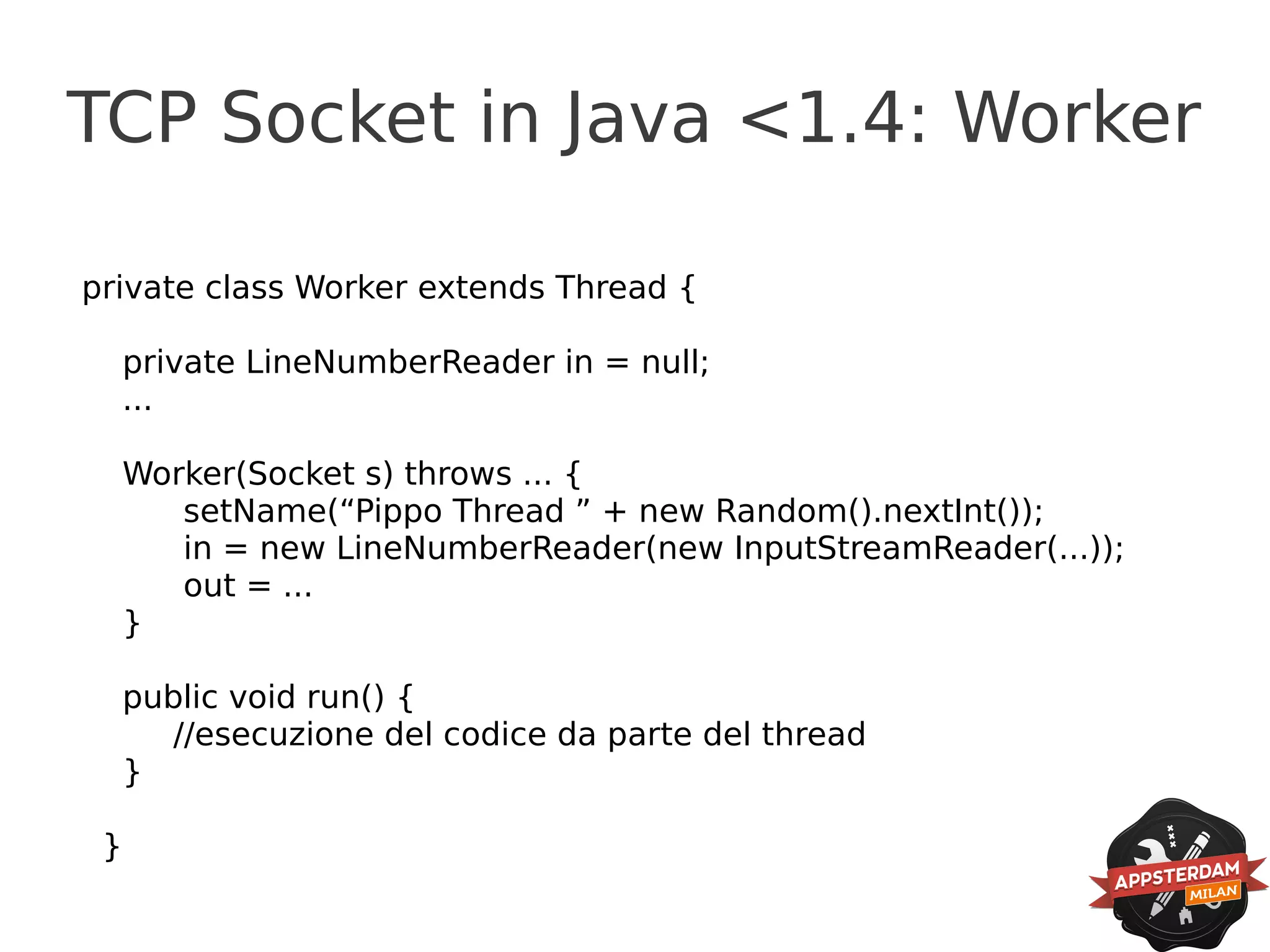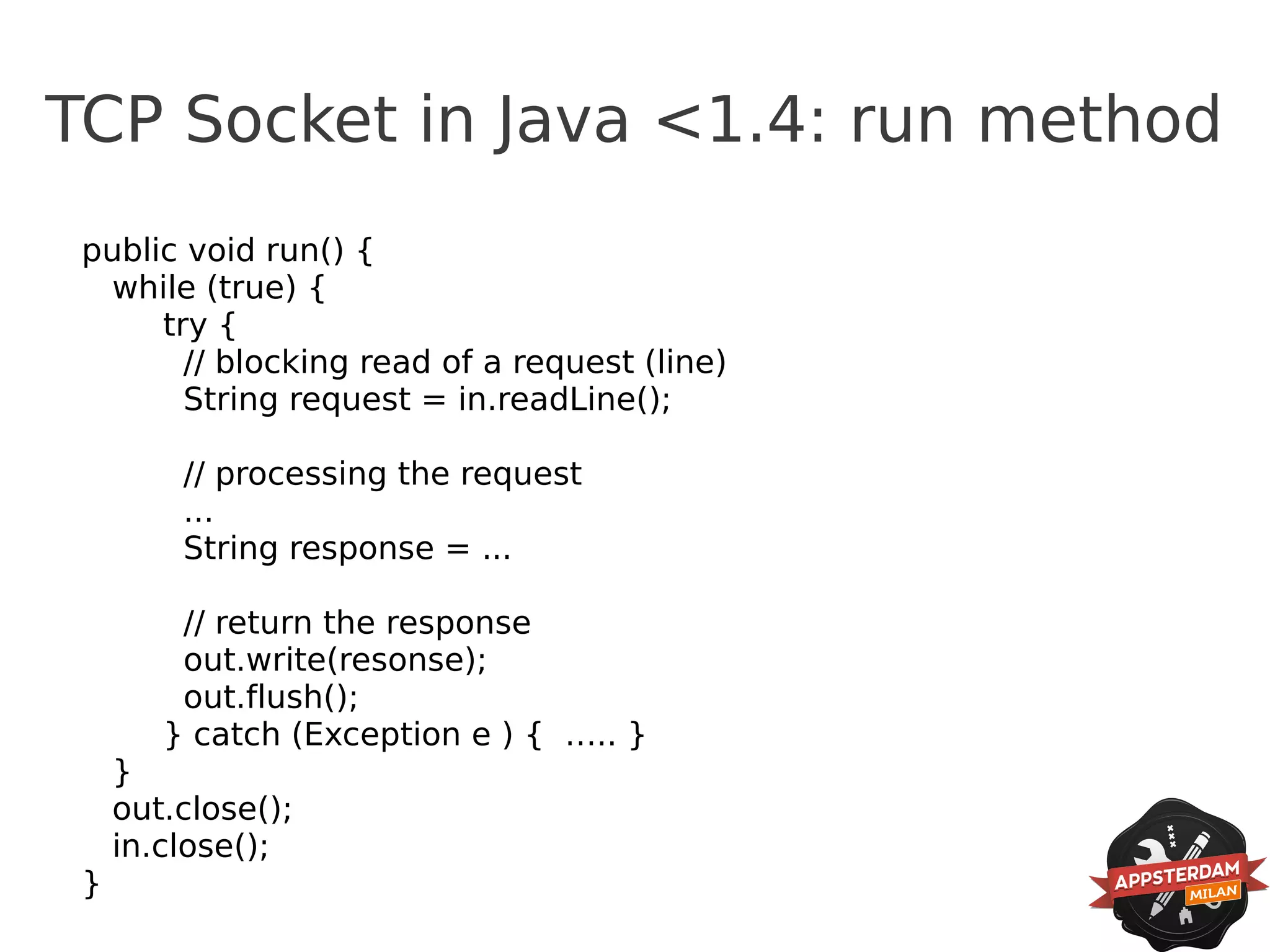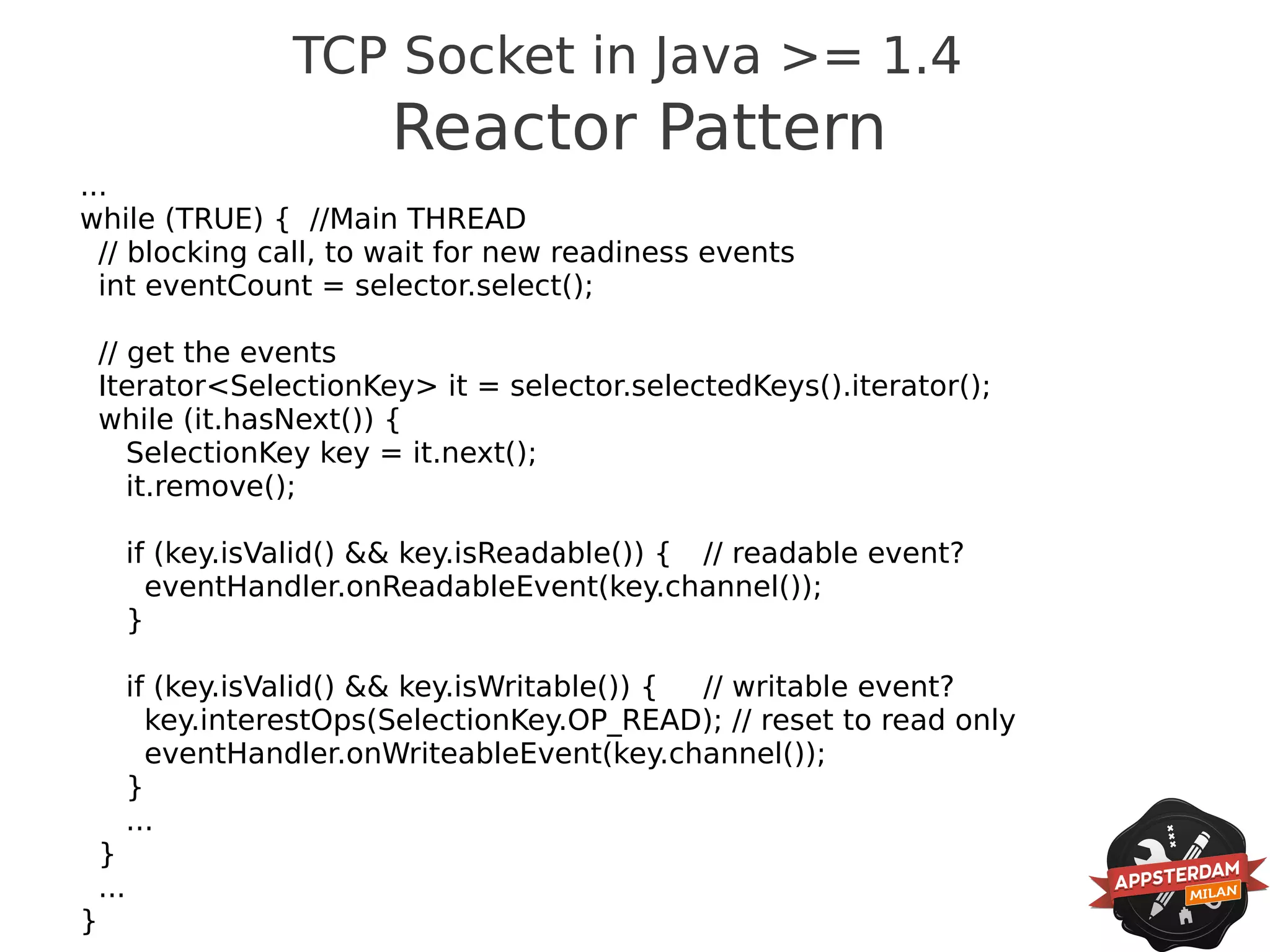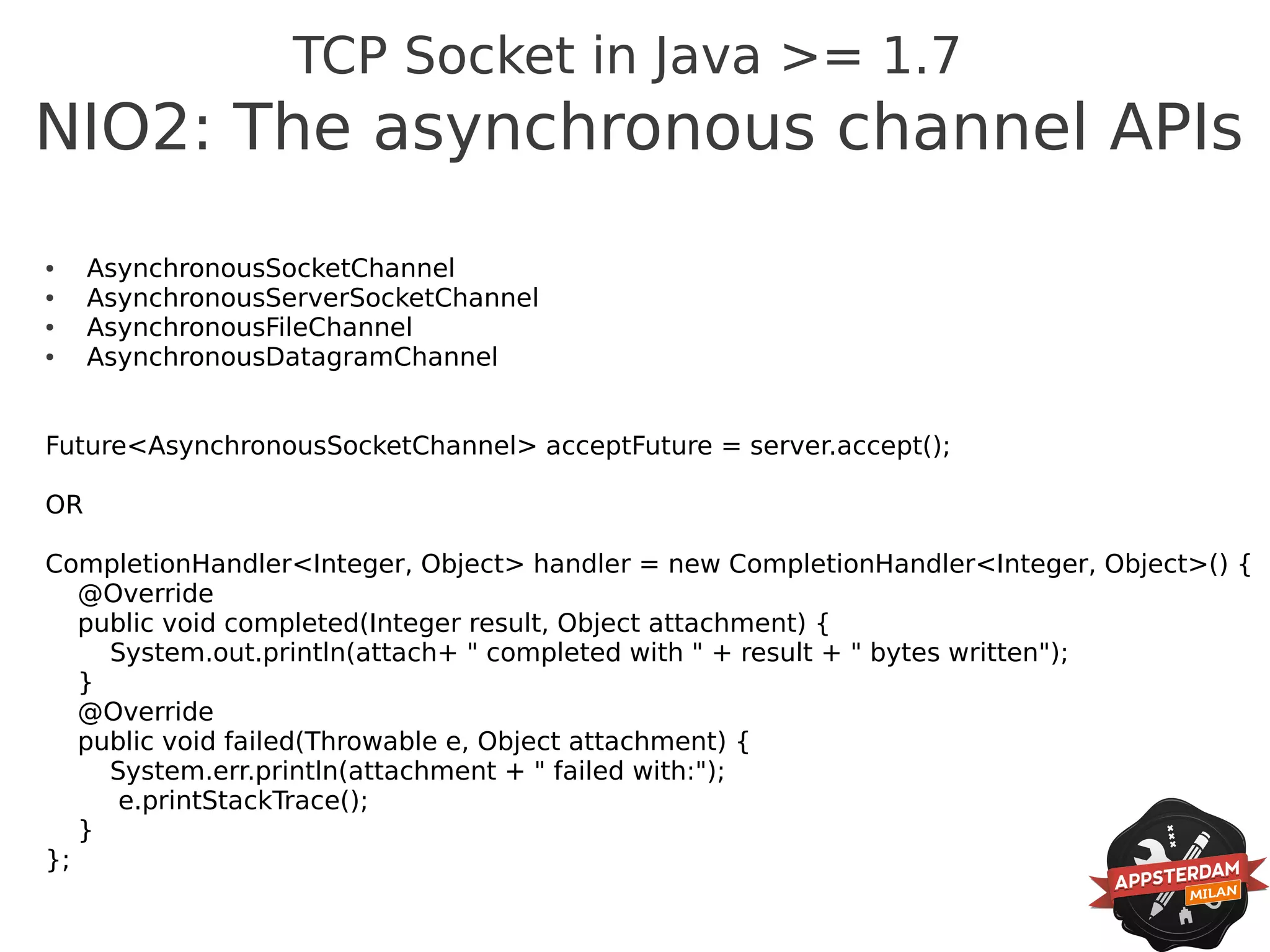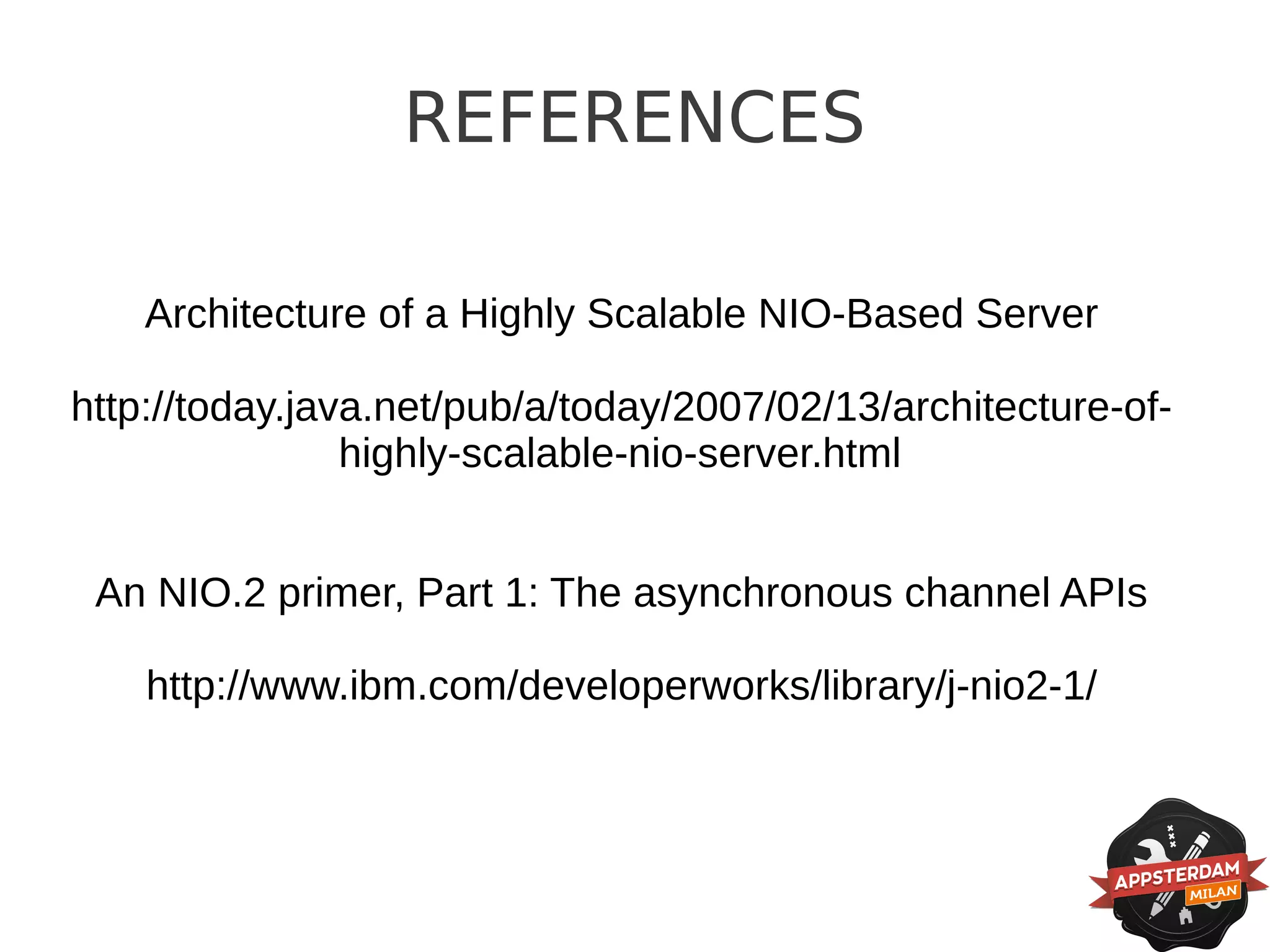The document discusses multithreading in Java, including the evolution of threading support across Java releases and examples of implementing multithreading using Threads, ExecutorService, and NIO channels. It also provides examples of how to make operations thread-safe using locks and atomic variables when accessing shared resources from multiple threads. References are included for further reading on NIO-based servers and asynchronous channel APIs introduced in Java 7.
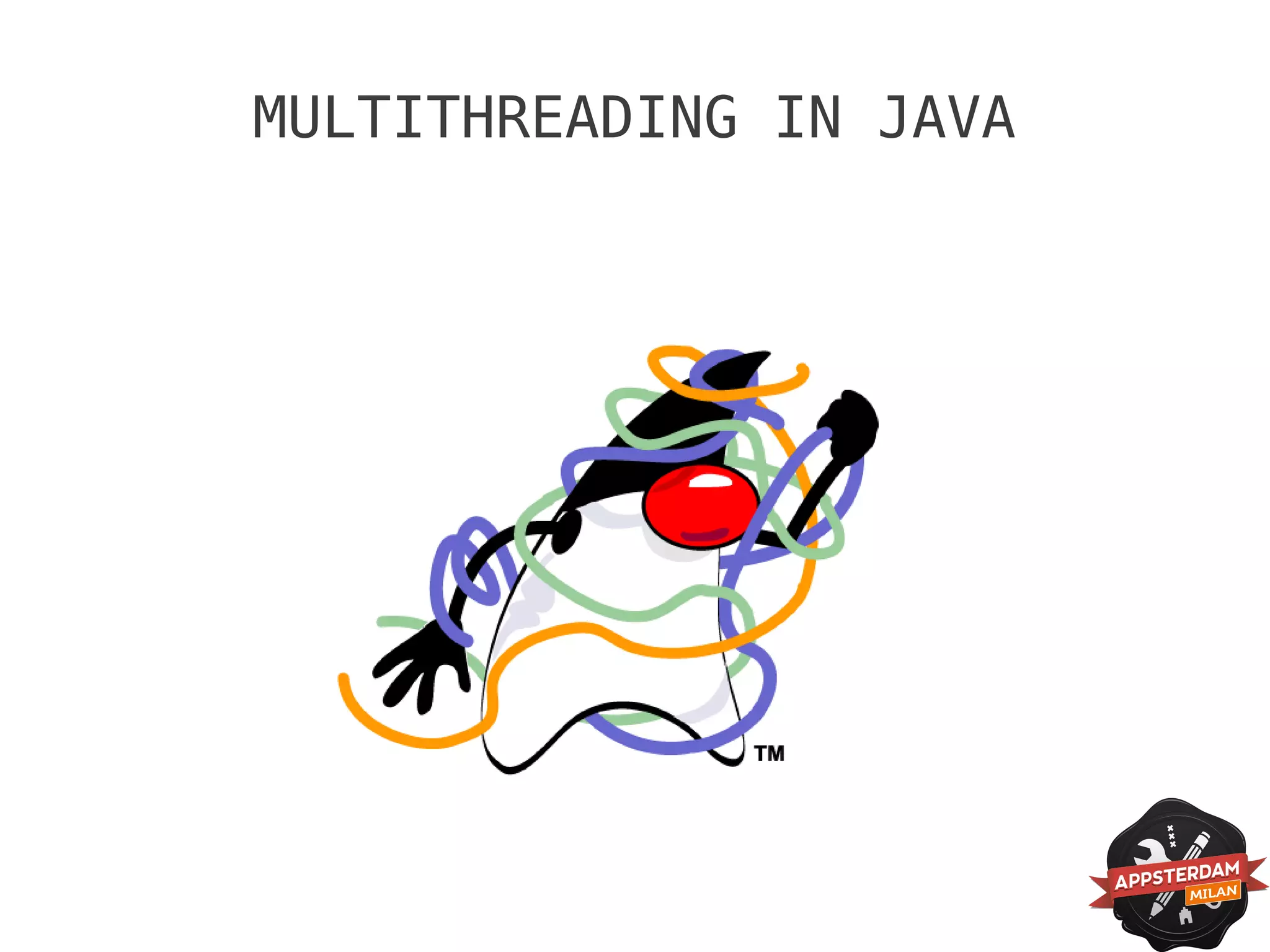
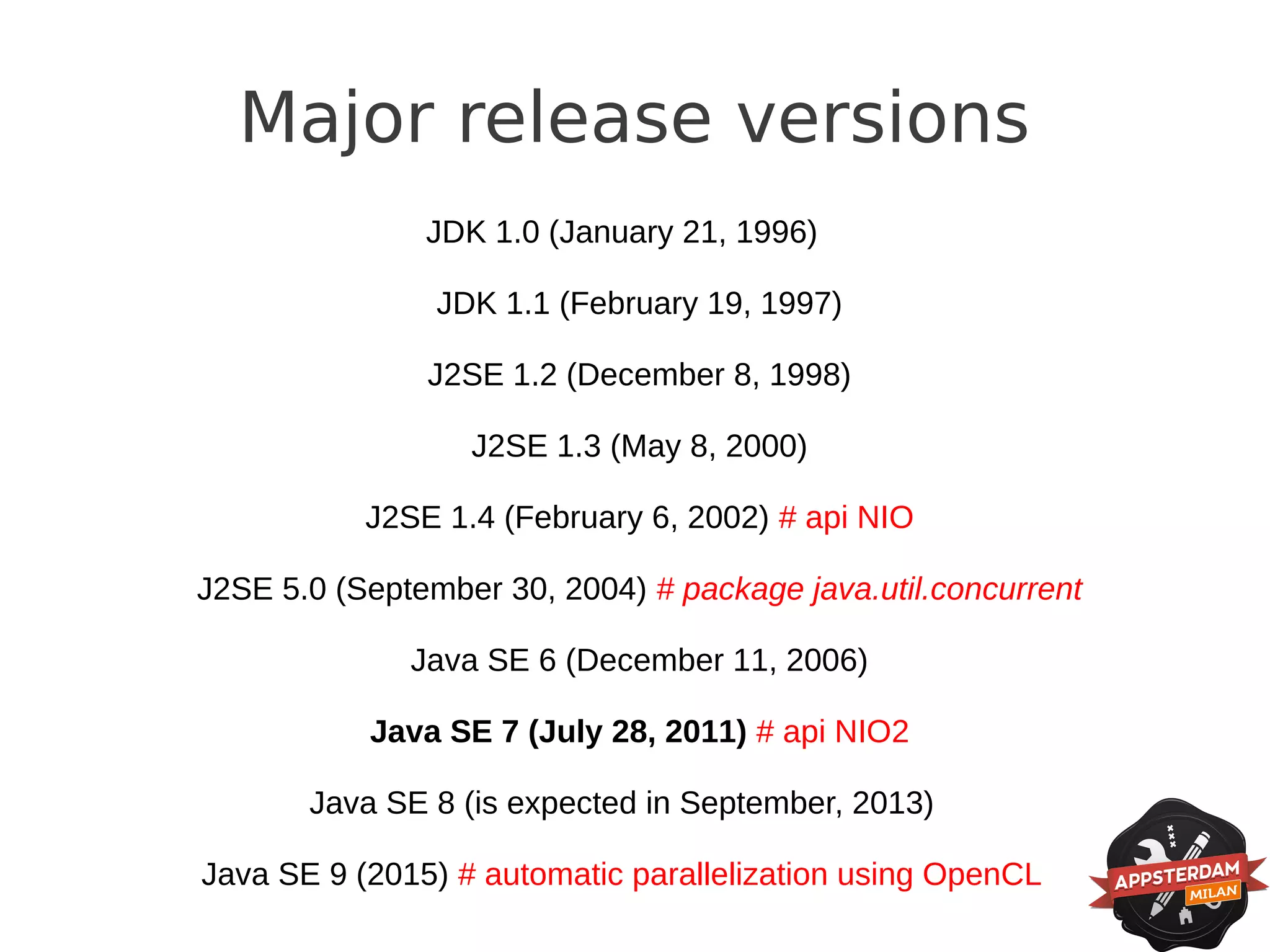
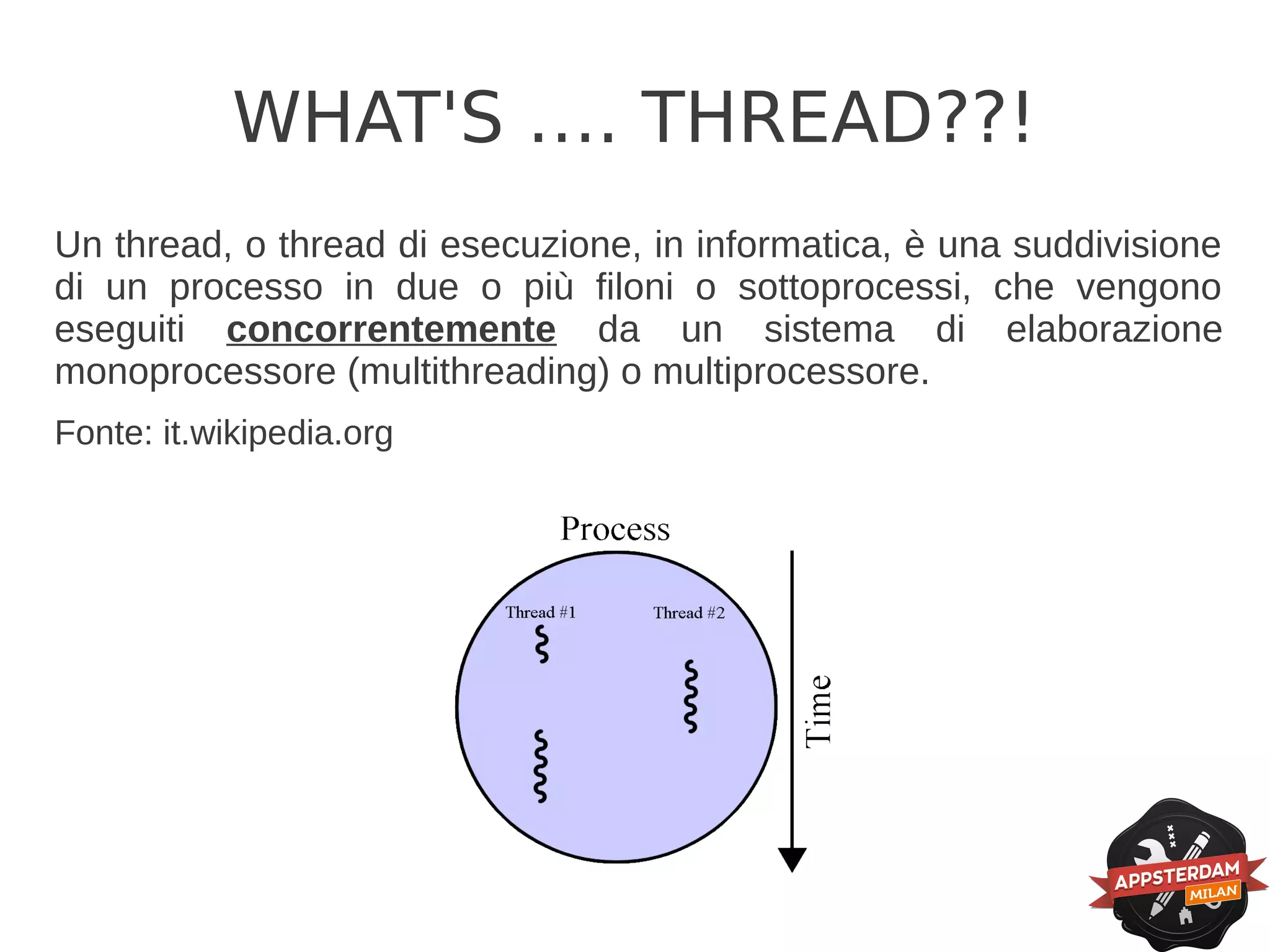
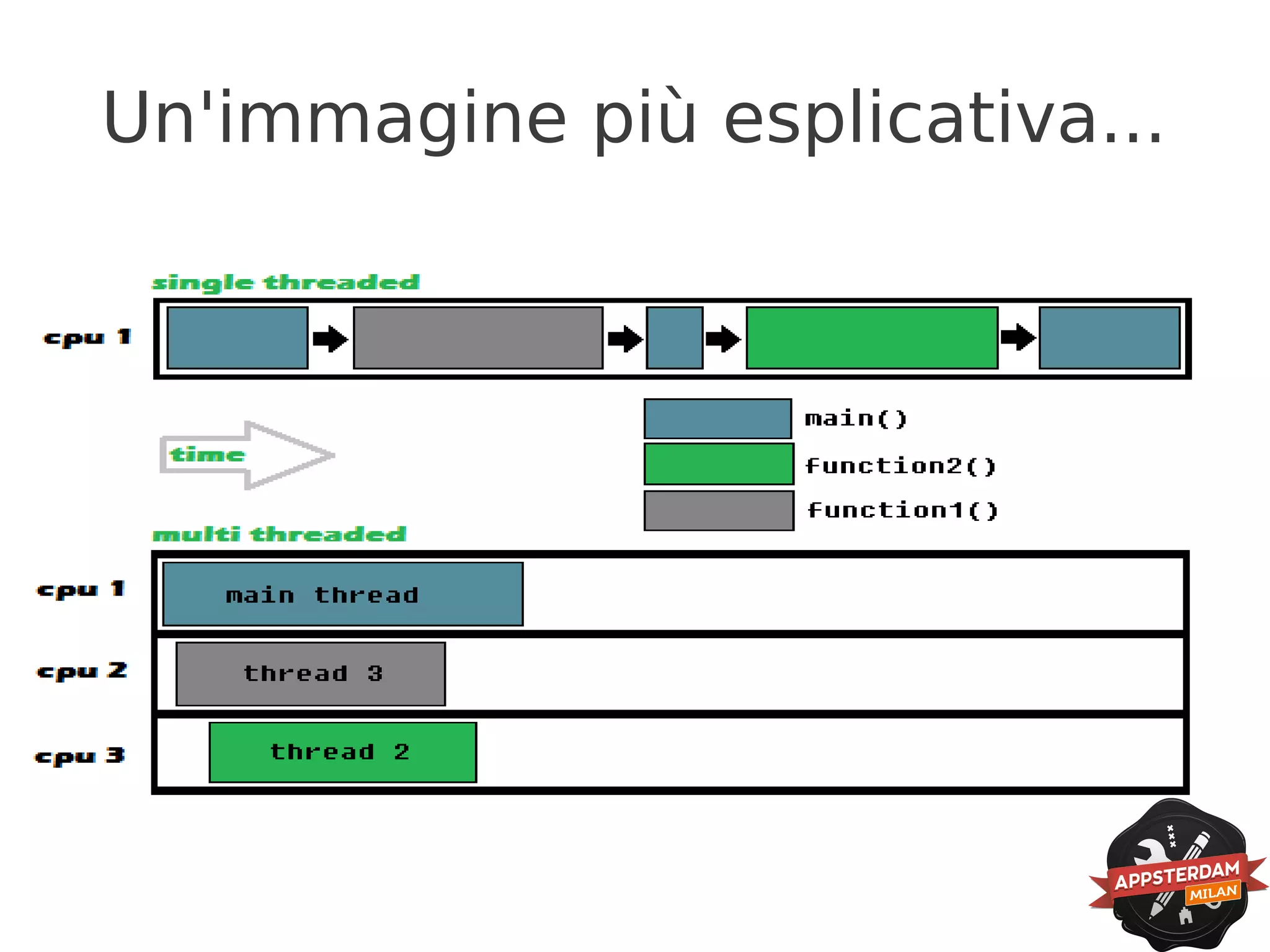
![Scriviamolo in Java...
class ThreadMain {
public static void main(String[] args) {
MyBusinessObject mbs = new MyBusinessObject();
Worker w1 = new Worker(mbs); w1.start();
Worker w2 = new Worker(mbs); w2.start();
}
class Worker extends Thread { run() { … } }
}
class MyBusinessObject {
Boolean value = false;
AtomicBoolean atomicvalue = new AtomicBoolean(false);
Function1() { …. } //funzione uno che accede al campo della classe
Function2() { …. } //funzione due che accede al campo della classe
}](https://image.slidesharecdn.com/slidemtjavaxappsterdam-130417043701-phpapp01/75/Multithreading-in-Java-5-2048.jpg)
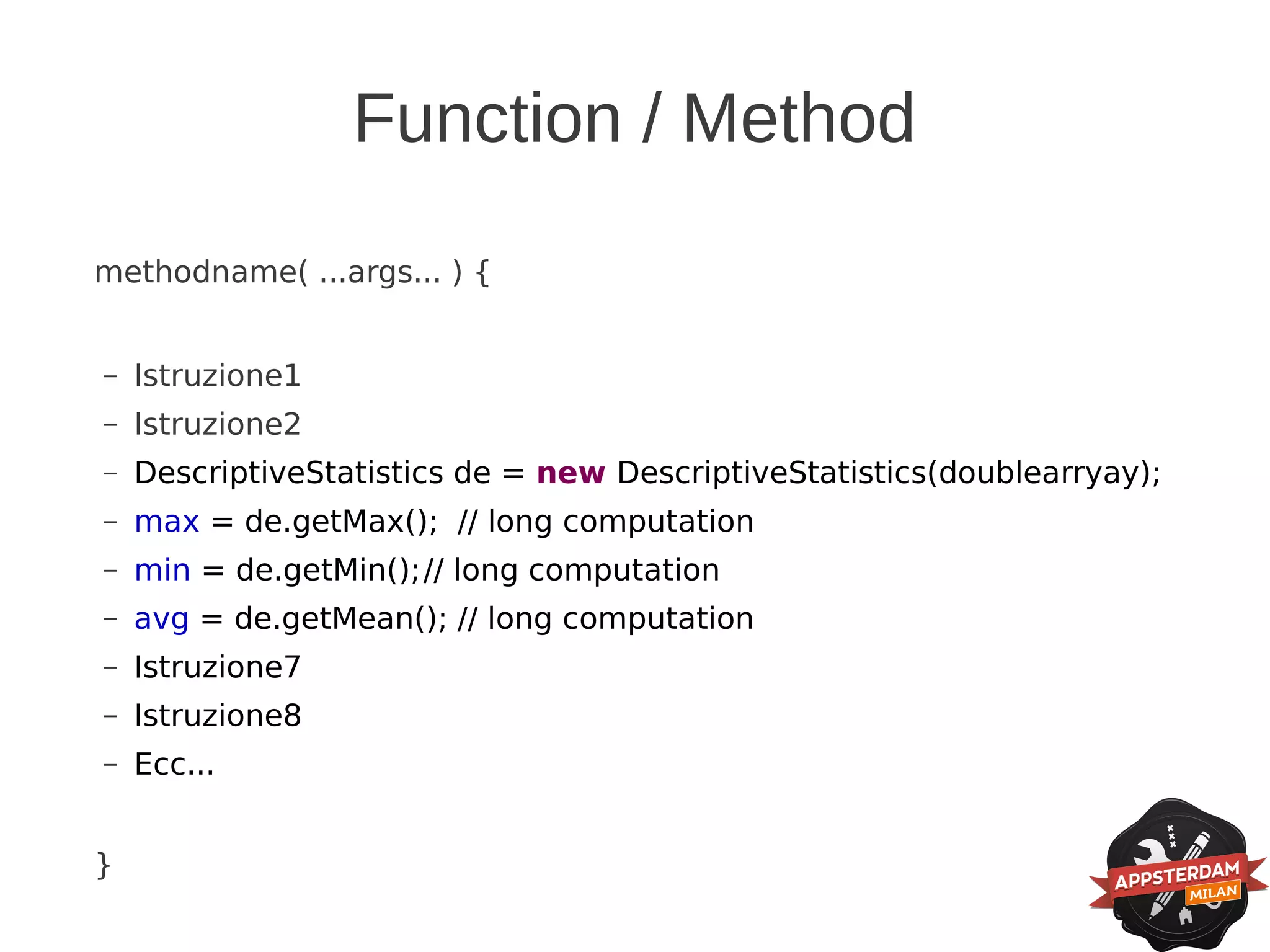
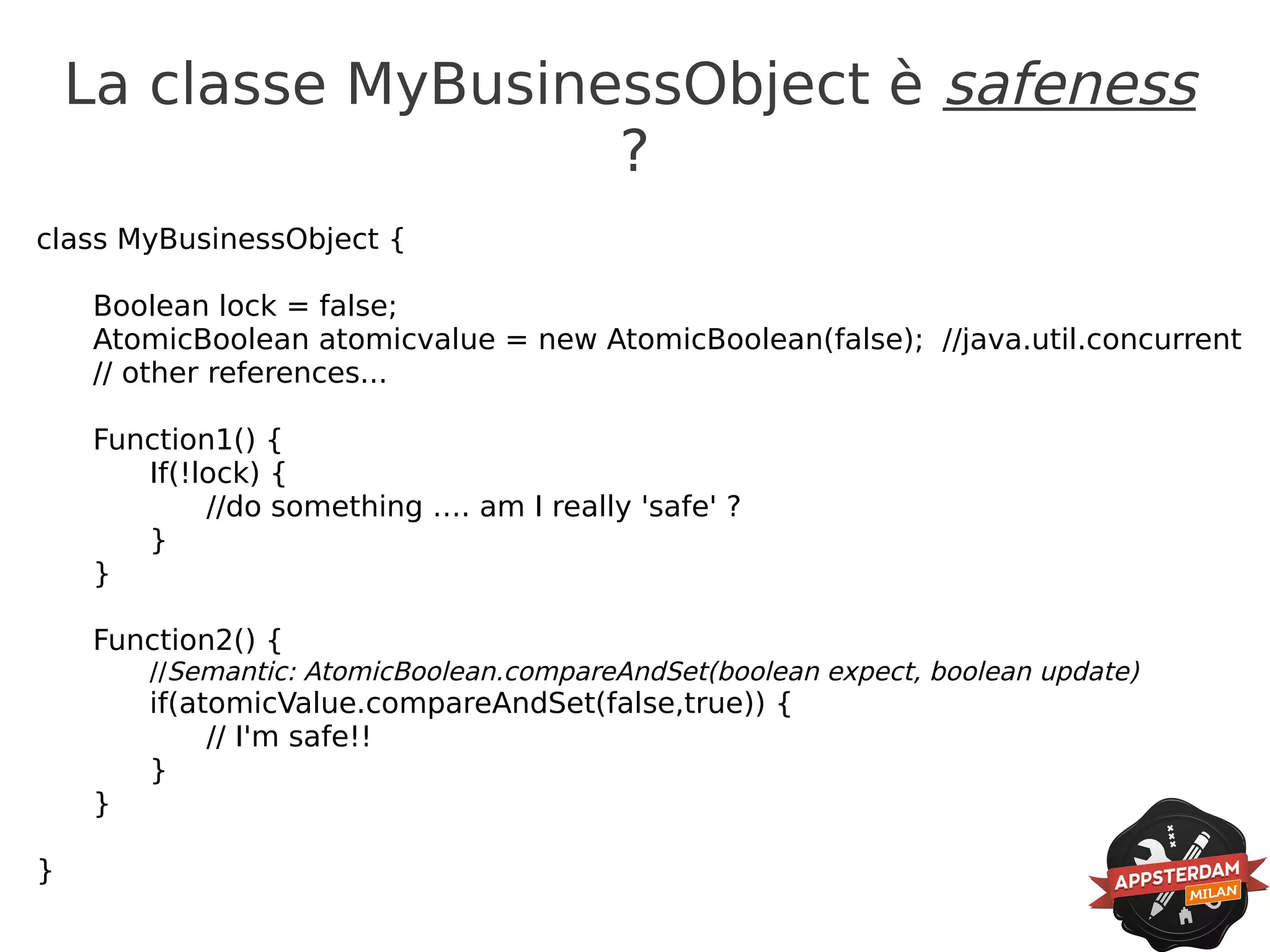
![TCP Socket in Java <1.4: Server
public class Server { //Main THREAD
private ExecutorService executors = Executors.newFixedThreadPool(10);
public static void main(String... args) throws ... {
new Server().launch(Integer.parseInt(args[0]));
}
public void launch(int port) throws ... {
ServerSocket sso = new ServerSocket(port);
while (true) {
Socket s = sso.accept(); // bloccante
Worker w = new Worker(s); // 1.4 style
w.start();
executors.execute(new Worker(s)); // ExecutorService in 1.5
}
}
}](https://image.slidesharecdn.com/slidemtjavaxappsterdam-130417043701-phpapp01/75/Multithreading-in-Java-8-2048.jpg)
